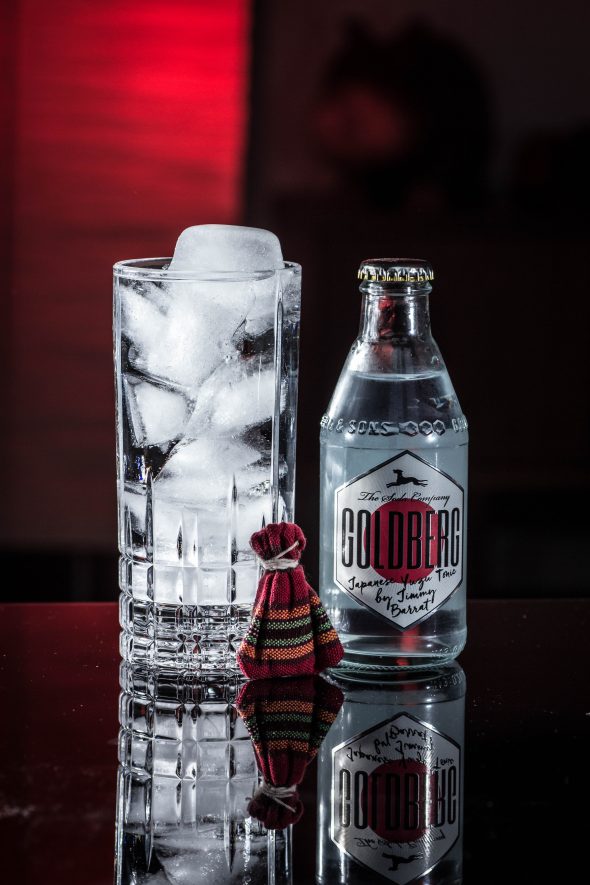
After the Aloha Gin from Heilbronn, today it’s another article about gin. But this time, however, it is about a gin that is not from Germany or another European country. Quite on the contrary, this gin has already collected a bunch of flight miles before it reaches Germany. And yet it is close a relative of another gin that I have already presented here in the past. I am thinking of the Peruvian GIN’CA, which comes from the same Peruvian distillery as today’s Gin listening to the name “Amazonian Gin Company Cantinero Edition”.
In my article about the GIN’CA, I had already briefly described that the column stills of the Peruvian Inca Distillery, from which both juniper spirits originate, are of German manufactory. Now the Amazonian Gin also informs on its bottle that the production process was preceded by intensive talks between chief distiller Eric Röthig-Lopez, the doctor and gin enthusiast Leonille Schweizer and the two well-known Peruvian bartenders Luis Flores and David Romero in the Peruvian capital of Lima. Since in Peru, of course, Pisco plays by far the biggest role, the idea to produce a gin with Amazonian botanicals was a quite unusual one and required thorough scheduling. Finally, however, the Quartet succeeded in creating a conceivably innovative gin with the help of numerous completely new botanicals from the Amazon area. As with the GIN’CA, however, the juniper does not originate from the region because it simply does not grow there.



So far so good. But what does that mean exactly? When writing about the GIN’CA I had the problem that I did not know some of the botanicals used. This feeling is now driven to the top by the Amazonian Gin. But ultimately I have enjoyed the GIN’CA very much and as a friend of innovative and exotic things I am more than curious about today’s bottle. So let’s take a closer look at what awaits us inside of this gin. The base alcohol was made from sugar cane, exactly like in the GIN’CA and quite unusual for a gin. The botanicals mentioned include: Amazon citrus fruits, Aguaymanto, Camu-Camu, Paranuts and Sacha Inchi. Besides that there are also amazon chestnuts. All from local production. Well, basically, after reading this list I know as much as before. Although I am very interested in the world of culinary things and know some exotic spices and herbs, I’m simply drawing a blank on that one. Accordingly, I have no idea at all how all those botanicals will be reflected in the final product. Well, some familiar botanicals can also be found: physalis (I like physalis), citron and lime.

The Amazonian Gin is bottled at 41% ABV and costs around 35 to 40 euros. I would classify it as a New Western Gin, although the bottle itself omits any classification details. But I am definitely not familiar with the Peruvian legal framework for gin.
Tasting Notes:
Aroma: On the nose this is perhaps one of the “citrusy-spiciest” gins I have ever experienced. My first association was immediately “lime,” but behind that lime lies a complex structure of spices and herbs which I cannot ascribe immediately. I think of Szechuan pepper, pine oil, cloves, some menthol and also juniper. The latter is however rather decent and not the first impression. I simply can’t do a precise ascription of the botanicals due to a lack of detailed knowledge and experience. The aromatic impression is, however, without doubt very imposing!
Taste: Wow, also on the palate the Amazonian gin is really intense and spicy, again I have to think of Szechuan pepper with its slightly tingling sharpness, spicy and powerful lime in combination with some “woody” notes of pines, fir cones and juniper. Finally there is citron. Again, I cannot adequately assign or verbalize the overall impression.
Finish: dry, exotic and spicy.

At first I instinctively wanted to opt for the Fever Tree Mediterranean Tonic, but then I thought to myself: you have already used that one with the GIN’CA. Well and because I was still in a yuzu mood, I chose another yuzu tonic with the “Goldberg Japanese Yuzu Tonic”. The exotic spice of the yuzu fruit is not only very nice inside the tonic when having it without gin, it also works really well with the numerous exotic and spicy botanicals in the Amazonian Gin. And you certainly won’t find a more exotic Gin & Tonic. Just the right thing for any progressive soul!

Pingback: Pure Spirits: Príncipe de los Apóstoles Mate Gin | Galumbi